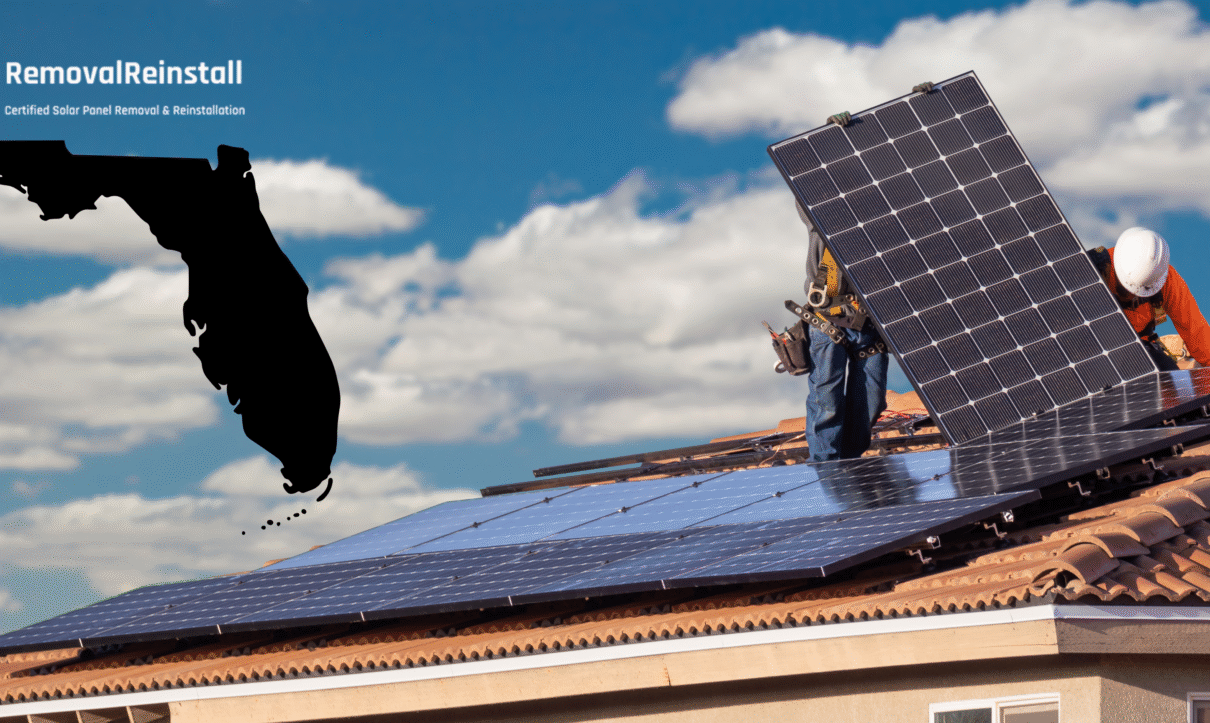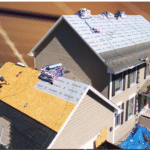Solar Panel Removal and Reinstallation in Florida: What Homeowners Should Know
A practical Florida guide to permits, warranties, timelines, roof types, and contractor selection for safe solar panel removal and reinstallation.
Why This Matters in Florida
Florida homes often need roof work because of heat, humidity, and storms. At the same time many households use solar. When the roof needs attention, panels must come down and go back up the right way. This work needs permits, licensed professionals, and attention to warranties. Doing it correctly protects your roof and your solar investment.
Request a professional quote to plan your project with a certified Florida team.
When Solar Panel Removal Is Needed
- Roof replacement or repair
- Changing roof type such as shingle to metal or tile
- Leak inspections under the array
- Relocating the system to a new property
- Upgrading equipment such as inverters or batteries
A licensed solar contractor should handle removal, storage, and reinstallation. This keeps the system safe and compliant.
Permits and Florida Regulations
Most Florida jurisdictions require a building permit for removal and reinstallation. Some counties accept original engineering drawings when the layout and roof type do not change. Others require updated plans if the roof material, mounts, or layout will be different. If you have a Homeowners Association, submit for ARC approval before work begins.
- Permit application and fees
- Engineering drawings when needed
- Scheduled inspections after reinstallation
Your contractor must carry a Florida Solar Specialty License (CVC) or Electrical Contractor License (EC) and proper insurance.
Protecting Your Solar Warranty
Manufacturers such as Tesla, Enphase, SolarEdge, and Qcells require certified technicians for removal and reinstallation. Unlicensed work can void warranties. Correct handling prevents wire damage, open connectors, and grounding issues.
- Labeled disconnection of each panel
- Safe handling of microinverters and optimizers
- Temporary sealing of roof penetrations
- Documented service for warranty continuity
- Testing and inspection before activation
Step by Step Process
- Initial inspection: Panel count, inverter type, mounts, and roof material are recorded. Photos document current conditions.
- Quote and scheduling: Scope of work and timeline align with your roofing contractor.
- Permits and plans: Contractor submits drawings and coordinates with the county and HOA when applicable.
- Safe removal: Panels are labeled, cleaned, and stored. Rails and wiring are removed. Penetrations are sealed.
- Roofing phase: Roofing company completes the new roof or repairs.
- Reinstallation: New mounts and rails are installed. Panels are set in place. Electrical is connected to code.
- Testing and inspection: Output, grounding, and monitoring are verified. County inspection clears final activation.
Typical Timeline
| Stage | Typical Duration |
|---|---|
| Permits and HOA approvals | 1 to 3 weeks |
| Panel removal | 1 to 2 days |
| Roof replacement | 2 to 5 days |
| Reinstallation | 2 to 3 days |
| Final inspection and activation | 1 to 2 days |
Most projects complete within two to four weeks depending on permits and weather.
Roof Type Details
Shingle Roofs
Shingle roofs are the most common in Florida and are usually the fastest for solar work. Panels attach with lag bolts and flashing mounts. Reinstallation on a new shingle roof should include new mounts and fresh flashing for water protection and code compliance.
- Fast removal and reinstall in many cases
- Lower labor cost than tile and metal
- Simple water sealing when using new flashing
Tile Roofs
Tile roofs are durable and attractive but need more time. Crews remove tiles to access mounting points and use tile hooks or tile replacement mounts. Careful handling prevents breakage and leaks.
- Specialized hardware and careful tile handling
- More labor time which increases cost
- Best with experienced tile solar teams
Metal Roofs
Metal roofs are popular for storm resistance and long life. Standing seam roofs allow clamp mounts that do not require roof penetrations. Corrugated metal uses sealed brackets or screws. Metal often results in a very durable solar pairing.
- Standing seam clamp systems are clean and secure
- Corrugated systems use sealed fasteners and brackets
- Excellent long term durability
At a Glance
| Roof Type | Complexity | Typical Hardware | Notes |
|---|---|---|---|
| Shingle | Low | Flashed mounts and rails | Usually fastest and most affordable |
| Tile | High | Tile hooks or tile replacement mounts | Extra care to avoid cracked tiles |
| Metal | Medium | Standing seam clamps or sealed brackets | Very durable result with correct hardware |
Costs and Factors
Exact pricing depends on system size, roof type, hardware needs, permits, and whether you need storage or relocation. Tile and metal usually cost more than shingle because of labor and hardware. Your quote should include removal, transport or storage when needed, reinstallation, permit handling, and testing.
- Panel count and inverter type
- Roof material and slope
- New mounts, rails, wiring, and code updates
- County permit and engineering fees
- Relocation distance if moving to a new property
Ask for a clear scope and confirmation that workmanship and product warranties remain valid after reinstallation.
Insurance and Storm Damage
Storm events can damage both roofs and solar. Many homeowner policies cover removal and reinstallation when part of an approved roof claim. Most carriers require licensed work and clear separation of roofing and solar invoices.
If you suspect storm damage, schedule roofing and solar inspections first. Good documentation helps the adjuster process your claim.
Upgrades to Consider During Reinstallation
- Switch to microinverters for panel level performance
- Add battery storage for backup
- Replace aging wiring and rails to meet current code
- Reposition modules for better sun exposure
- Clean and test each panel while down
Choosing the Right Contractor in Florida
- Valid Florida CVC or EC license and insurance
- Experience with shingle, tile, and metal roofs
- Written workmanship warranty
- Manufacturer certifications where applicable
- Positive reviews and BBB record
Removal Reinstall Solar Panels provides licensed and certified detach and reset services across Florida, including engineering, permitting, reinstallation, and final testing.
Homeowner Tips for a Smooth Project
- Schedule removal at least two weeks before roof work
- Photograph the array and labels before removal
- Store panels in a dry and shaded place
- Let roofing and solar teams coordinate directly
- Request a performance test before activation
- Keep permit and warranty documents together
Common Mistakes to Avoid
- Starting work without a permit
- Allowing non solar personnel to disconnect panels
- Reusing old mounts on a new roof
- Skipping manufacturer certified service
- Forgetting utility reconnection steps
External Resource
For technical context on solar performance and mounting systems, see the National Renewable Energy Laboratory resource hub: NREL Solar.
Plan Your Removal and Reinstallation
Get a clear scope, timeline, and warranty continuity with a certified Florida team.



